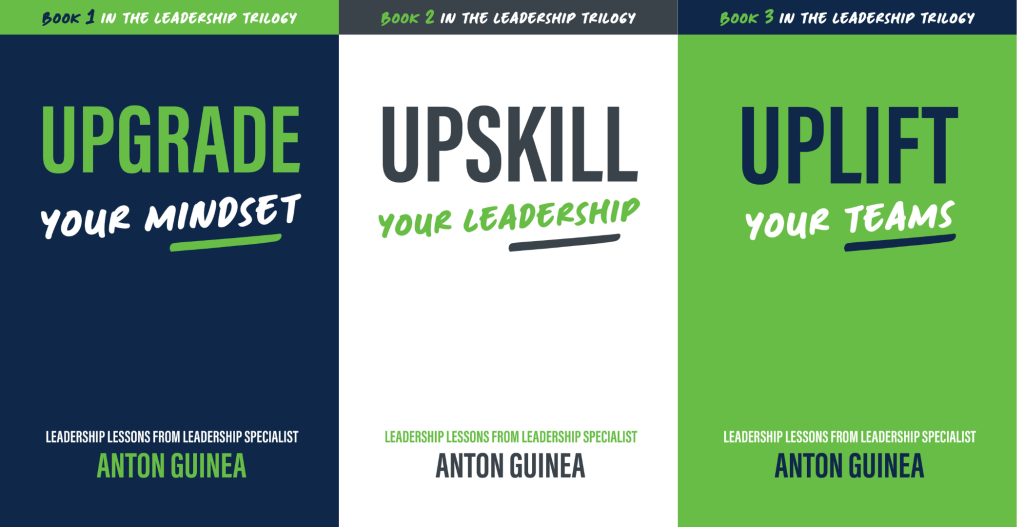Anton Guinea
Entrepreneur, Speaker, bestselling author, and founder of The Guinea Group of Companies. For over 15 years, Anton has helped leaders move their teams to become psychologically safe, physically safe and overall better versions of themselves.

WHAT EMPATHY REALLY TAKES…

When we talk about leadership characteristics and qualities, the word empathy is usually mentioned. But, what is empathy really. Empathy is about being able understand the emotional pain that someone else is going through, and in the words of Brene Brown; being able to ‘hold the space’, when someone else is hurting. Empathy, unlike sympathy, is not an emotion. It is an action, it is a behaviour, and it is something that takes time, and it takes effort. And it can be learnt.
Firstly, though, it is important to unpack the difference between sympathy and empathy.
???????? (the emotion) is:
– An emotional response
– An automatic response
– Controlled by the Limbic System of our brain – primal
– When someone tells you ‘they have cancer’, and you automatically feel sympathetic
– Something that hurts your heart (there is not much you can do)
??????? (the action) is:
– A cognitive response
– A non-automatic response
– Controlled by the frontal lobe of our brain – processing
– Thinking first (congition), feeling (an emotion) second, and compassion third (compassion is the big thing – compassion is about action)
– When someone tells you ‘they are struggling’, or ‘not coping’, or’ have been hurt by someone else’ …
– And it moves you to action (there might be things you can do)
If you are empathetic, you will take action; Or you will at least try to understand further.
In short, when a leader is asked to undergo empathy training, it is saying that you need to understand how to demonstrate an appropriate response (take better action).
Empathy, according to Daniel Goleman (founder of the concept of Emotional Intelligence), is a three-part process that involves cognition, emotion, and compassion. When we are confronted with someone in pain, we need to process what it is that they are suffering though. Take for example, if your key team member tells you that they need a week off during an important project, because their pet dog has just died. You need to think through that before responding and think through that your response might mean to (and how it might impact) your team member.
The next stage is to experience an emotional response … and it might be sympathy (if you are a dog lover, that won’t be hard, as you will be able to emotionally connect to the situation). If you don’t sympathise, ask some questions to understand more about the situation and why the dog was so important to its owner. When you can emotionally connect, it is time to go to compassion.
Compassion is not a natural thing for a lot of people. Although humans are innately compassionate (infants have been studied and control and experiment groups show that compassion starts early in our lives) … some people forget to use it when they need to. The reason is that other priorities get in the way (in the moment), and the project deadline, their own wants and desires are more important, and for some reason we choose to turn our empathy off in the moment, and not give people the time and the care that they deserve when they are asking us to understand their hurt.
Empathy takes time.
Empathy takes effort.
Empathy takes willingness.
And please click the image below if you’d like to chat about what leadership means to you.
If you would like to learn more about Anton or The Guinea Group, please click here to book into Anton’s calendar, to:
UPGRADE your Mindset
UPSKILL your Leadership
UPLIFT your Teams
About Anton
Anton has dedicated his working life to helping leaders to upgrade their mindset, upskill their leadership, and uplift their teams! With a focus on helps leaders to better lead under pressure. Anton is an entrepreneur, speaker, consultant, bestselling author and founder of The Guinea Group. Over the past 19 years, Anton has worked with over 175+ global organisations, he has inspired workplace leadership, safety, and cultural change. He’s achieved this by combining his corporate expertise, education (Bachelor of HR and Psychology), and infectious energy levels.
Work With Anton!
Subscribe to our Newsletter
